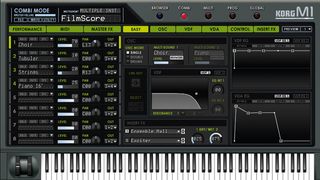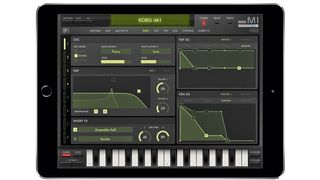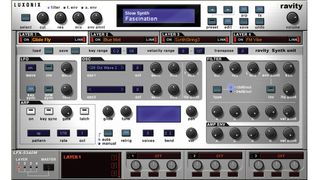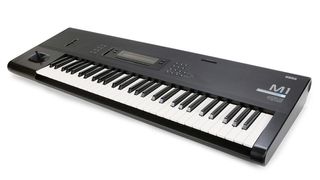The year is 1988, and the electronic music industry is at a turning point. Knob-laden analogue synthesisers have faded into memory, and the sample-based wavetable synthesis so beautifully presented by PPG is about to be whitewashed for the masses in the form of the soon-to-be-ubiquitous ROMpler. Roland's entry for 1987, the D-50, combined sampled attack transients with sustained synthesised waveforms, and slathered the lot in a gauzy haze of reverb. It was a mighty success, with the instrument seeming to be on perpetual back-order.
But the D-50 was only the start. Korg, too, had dabbled in sample-based synthesis back in 1985 with their DW-6000 and DW-8000 units, both of which contained a handful of single-cycle sampled waveforms that were pumped through filters, envelopes and even - on the flagship model - a built-in digital delay. With the D-50 selling like hot cakes, it was only natural that Korg would up the ante by tapping once again into sample playback technology.
The result was the M1, which did nearly everything the D-50 did and more, with class, sophistication and refinement. Where the D-50 relied on sampled attacks and novel loops, the M1 offered up a then-burly 4MB of meticulously multisampled real-world instruments that actually made it sound like you were playing the real thing. Like the D-50, the M1 also boasted a full range of effects - and even multieffects - that could be used by its two built-in processors.
There were two inclusions that were crucial to the astonishing success of the M1. The first was a complete and sophisticated eight-track sequencer (the M1 was eight-part multitimbral) that allowed users to cobble together complete arrangements via a familiar pattern/song paradigm. It was friendly and powerful, that power being reinforced by the inclusion of some excellent sampled drum sounds. The M1 was, truly, a musician's workstation.
Users looking to create their own sounds could combine a pair of oscillators (no sync or cross-modulation, alas) and shuttle them through a non-resonant filter, modulating them with envelopes, LFO, keyboard, pedal and joystick. This simple pathway allowed the original samples to shine through.
Those who didn't want to do too much back-end tweaking could avail themselves of a veritable industry of support that grew up around the M1. Third-party patches and add-ons were common currency even into the 1990s. By that time, the M1 had become the biggest-selling synth ever produced, that popularity made evident by its instantly recognisable sounds popping up on radio and TV, and in the cinema. The M1's Pole, Magic Organ and Universe patches have become (perhaps overly) familiar, and its slap bass will resonate forever thanks to Jonathan Wolff's Seinfeld theme. And then there's that iconic piano sound - still popular today with dance music producers.
Today, the M1 continues to sell in virtual form from Korg themselves. However, its spirit also lives on in every hardware workstation and software ROMpler on the market.
Three great M1 emulations

Korg Legacy Collection M1
Containing all the sounds of the M1 and all 19 of Korg's optional add-on cards, the Legacy Collection M1 provides more than 2700 preset sounds in all. Coming in standalone, VST, AU and RTAS formats, it also adds filter resonance. The effects are ramped up, too, with dual dedicated effects processors available for all eight multitimbral parts.
FULL REVIEW: Korg Legacy Collection Digital Edition

Korg iM1
A different beast to the desktop version, Korg's iM1 for iPad offers the additional after-market cards as in-app purchases (for a total of over 3300 sounds), but adds a keen KAOSS pad controller in addition to filter resonance and beefed up effects. The touchy-feely interface answers any and all complaints about the original's lack of physical controls.
FULL REVIEW: Korg iM1

Sonic Cat Luxonix Ravity
A conscious attempt to offer a virtual equivalent to the M1 and all of the hardware ROMplers that followed it, the Windows-only Ravity and its big brother, Purity, provide a collection of bread and butter sounds, along with neat electronic timbres and percussion in a trim, easy-to-use package. It's a bit dated, but still useful. Just like the M1, then!
READ MORE: Sonic Cat Luxonix Ravity


